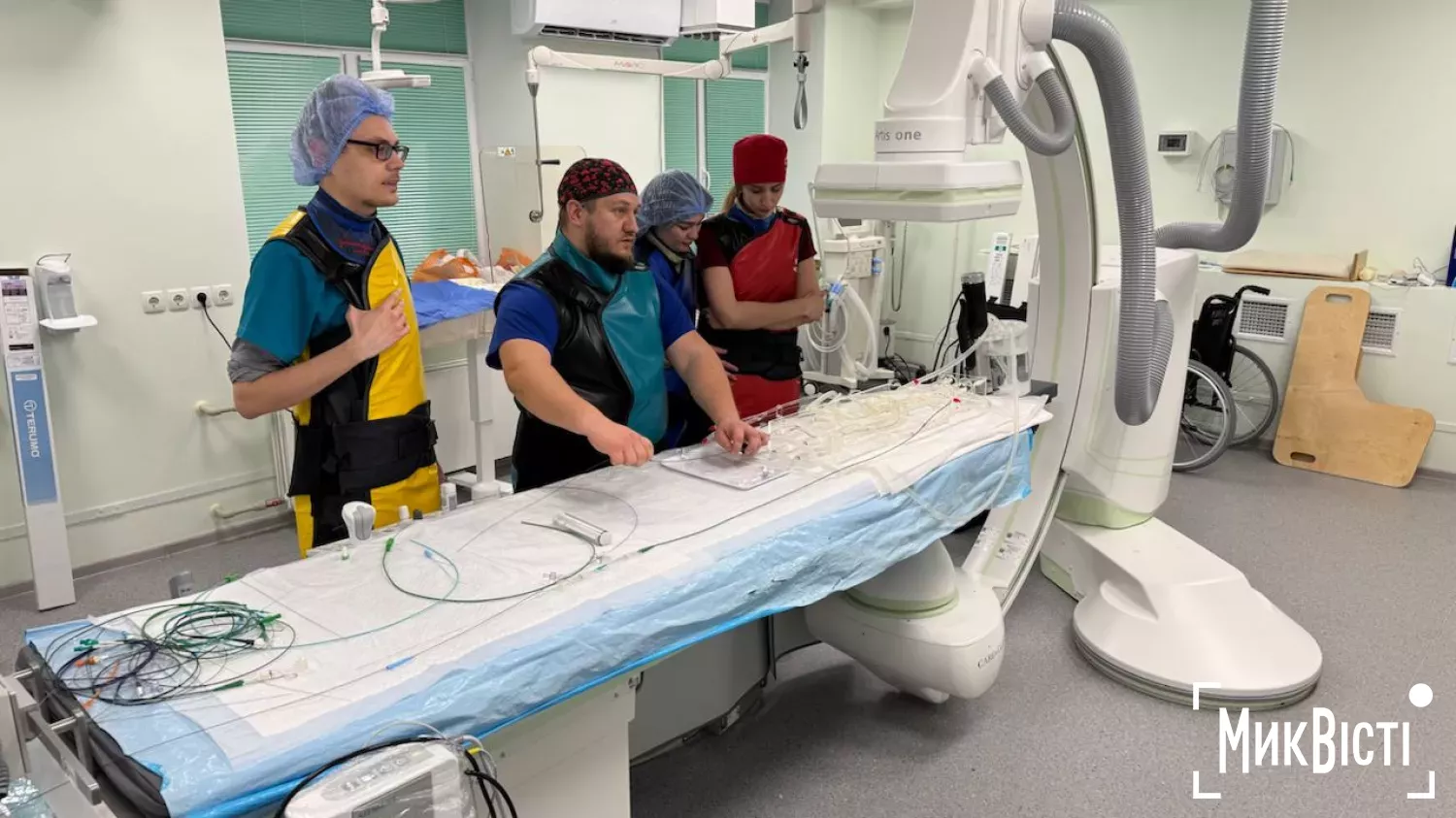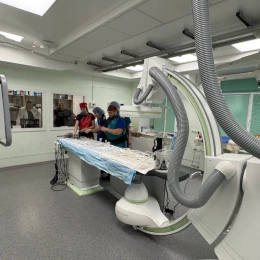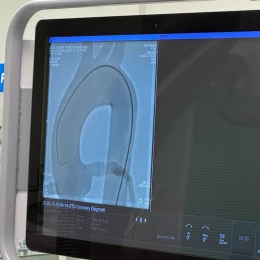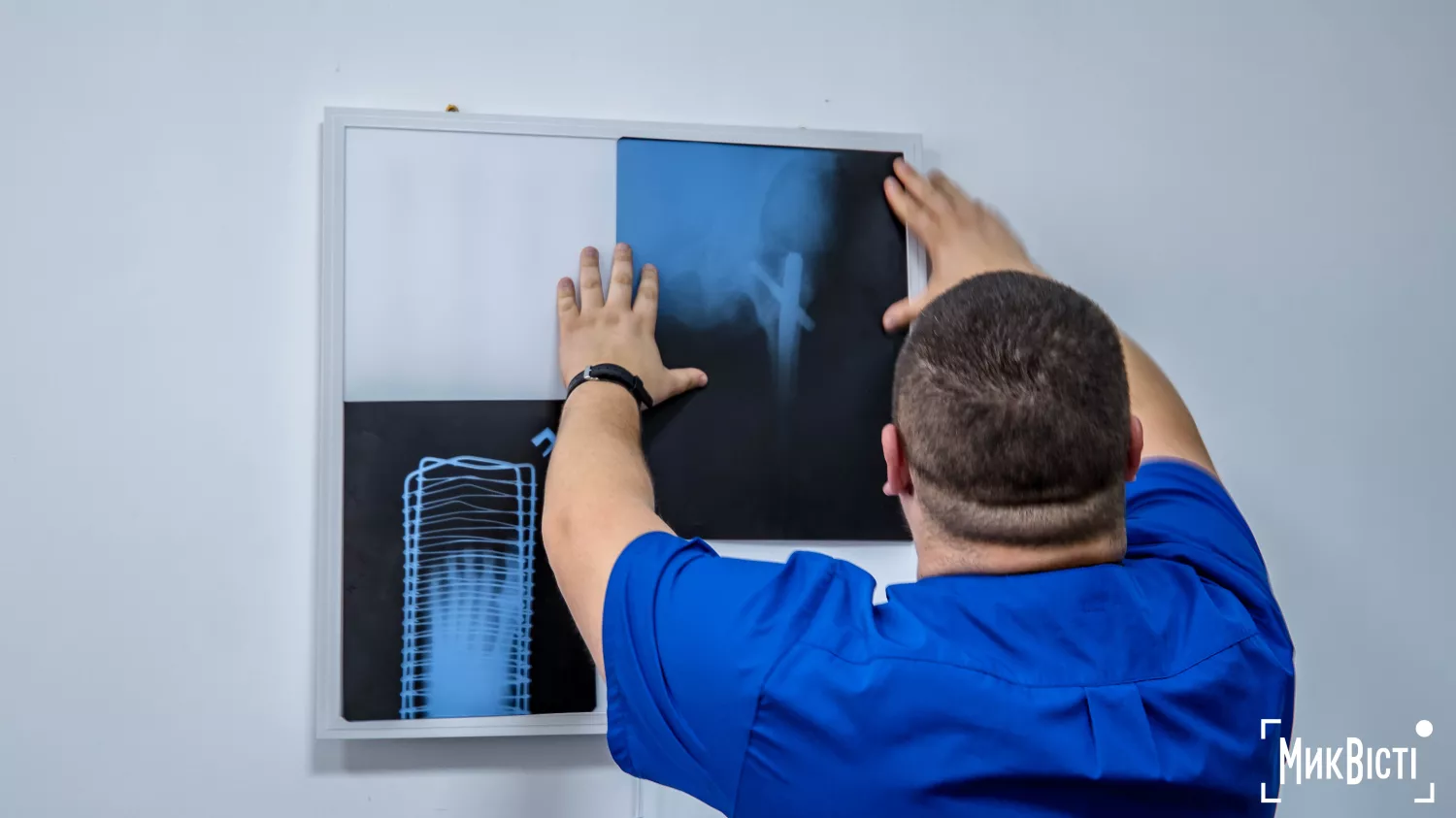The only one in the region: Mykolaiv Regional Clinical Hospital now diagnoses causes of ischaemic stroke
- Yuliia Boichenko
-
•
-
14:23, 27 May, 2025
 Doctors at the Mykolaiv Regional Clinical Hospital work with an angiographer. Photo «NikVesti» provided by Oleksandr Nedieliev
Doctors at the Mykolaiv Regional Clinical Hospital work with an angiographer. Photo «NikVesti» provided by Oleksandr NedielievMykolaiv Regional Clinical Hospital has started diagnosing the cause of ischaemic stroke. Doctors can help patients in the first 4-6 hours after the first symptoms appear.
Oleksandr Nedieliev, a neurosurgeon at the regional clinical hospital, told NikVesti.
The hospital performs cerebral angiography to diagnose the condition of the patients' cerebral vessels, and later plans to perform thrombectomy for ischaemic stroke, an operation to remove a brain clot.
Cerebral angiography is a method of X-ray examination of the brain vessels that allows visualising blood vessels, finding narrowings, aneurysms and other pathologies. It is «the gold standard» in the study of vascular diseases of the brain, the neurosurgeon explained.
 Doctors at the Mykolaiv Regional Clinical Hospital work with an angiographer. Photo NikVesti provided by Oleksandr Nedieliev
Doctors at the Mykolaiv Regional Clinical Hospital work with an angiographer. Photo NikVesti provided by Oleksandr NedielievIn the case of an ischaemic stroke, cerebral angiography helps doctors find out at what level the blood clot is located and allows them to remove it later.
«An angiograph is a large X-ray machine that shows the condition of blood vessels in real time. When I take a patient to the operating theatre, I need to know exactly what instruments I am taking with me and what consumables I am bringing. For this purpose, I need cerebral angiography, because it helps us understand the scope of intervention.
Plus, we have a team that has been trained and has the right to do this, as well as a set of special instruments. With this technique, we can then intervene in case of vascular thrombosis to remove the clot,» said Oleksandr Nedieliev.
He explained that this method of diagnosis helps to establish the location of the blood clot in the vessels and subsequently remove it so that the patient can immediately return to normal life.
«The cause of an ischaemic stroke is a blockage of blood supply to a certain part of the brain, which is responsible for certain functions: speech, limb movement, facial symmetry, and so on. Thanks to this technique, we can remove the blood clot and the blood will already go to the part of the brain that was excluded,» the neurosurgeon explained.
At the same time, he added, this technique also helps in some cases of haemorrhagic stroke, which is mainly caused by an aneurysm. However, it can be detected even before the onset of symptoms by undergoing an appropriate examination, says Oleksandr Nedieliev.
«If a haemorrhagic stroke has occurred, the most common cause is most likely an aneurysm. This means a bulging of the vessel wall, which simply ruptures due to high pressure or some kind of physical overload. And the blood that flows through the vessels begins to enter the brain tissue.
If the fluid has accumulated in the brain and begins to put pressure, a decision is made whether to openly operate on the patient or not. If the location and volume of blood spilled is insignificant, then, in general, this type of stroke can be treated conservatively for now. Later, when the blood outflow is complete and the aneurysm is clotted, we can take the patient for examination and interventionally (by puncture, — note) reach the aneurysm and block it without performing a skull trepanation,» explained Oleksandr Nedieliev.
As a reminder, the Mykolaiv City Emergency Hospital continues to introduce minimally invasive treatment methods in surgery. One of the latest examples is the successful surgery of an elderly patient.
What is an ischaemic stroke and why is it dangerous?
An ischaemic stroke occurs when the blood supply to a certain part of the brain is cut off due to a blood clot or embolus blocking the vessel. This leads to oxygen deprivation and neuronal death. The sooner a patient receives help, the better their chances of recovery.
Key facts:
- Ischaemic strokes account for up to 80% of all strokes.
- The critical window for treatment is the first 4-6 hours after the onset of symptoms.
- Symptoms: sudden numbness of the face or limbs, speech impairment, loss of coordination.
Cerebral angiography: how to diagnose the condition of brain vessels
Cerebral angiography is a method of visualising the vessels of the brain using X-rays and contrast medium. It allows detecting a blood clot, aneurysm or other circulatory disorders.
Why angiography is performed:
- To accurately determine the location of the vessel blockage in an ischaemic stroke.
- To prepare for thrombectomy — removal of a blood clot.
- To diagnose aneurysms, arteriovenous malformations and other pathologies.



